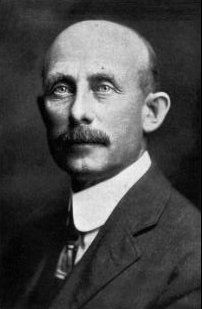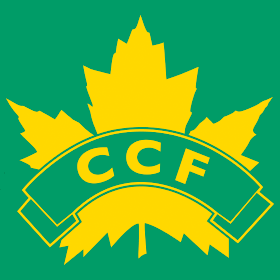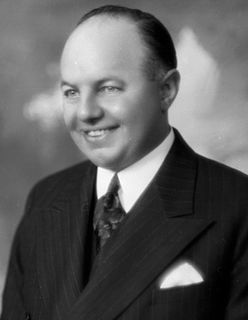This article needs additional citations for verification .(February 2016) (Learn how and when to remove this template message) |
| |||||||||||||||||||||||||||||||||||||||||
90 seats in the 19th Legislative Assembly of Ontario 46 seats were needed for a majority | |||||||||||||||||||||||||||||||||||||||||
| |||||||||||||||||||||||||||||||||||||||||
| |||||||||||||||||||||||||||||||||||||||||
The Ontario general election, 1934 was the 19th general election held in the Province of Ontario, Canada. It was held on June 19, 1934, to elect the 90 Members of the 19th Legislative Assembly of Ontario ("MLAs").

Ontario is one of the 13 provinces and territories of Canada and is located in east-central Canada. It is Canada's most populous province accounting for 38.3 percent of the country's population, and is the second-largest province in total area. Ontario is fourth-largest jurisdiction in total area when the territories of the Northwest Territories and Nunavut are included. It is home to the nation's capital city, Ottawa, and the nation's most populous city, Toronto, which is also Ontario's provincial capital.
Contents
The Ontario Liberal Party, led by Mitchell Hepburn, defeated the governing Ontario Conservative Party, led by George Stewart Henry. Hepburn was assisted by Harry Nixon's Progressive bloc of MLAs who ran in this election as Liberal-Progressives on the understanding that they would support a Hepburn led government. Nixon, himself, became a senior cabinet minister in the Hepburn government.
The Ontario Liberal Party is a provincial political party in the province of Ontario, Canada. The party is ideologically aligned with the Liberal Party of Canada but the two parties are organizationally independent and have separate, though overlapping, memberships.

Mitchell Frederick Hepburn was the 11th Premier of Ontario, Canada, from 1934 to 1942. He was the youngest Premier in Ontario history, appointed at age 37. His personality was complex, as The Globe and Mail noted in its obituary for him:

George Stewart Henry was a farmer, businessman and politician in Ontario, Canada. He served as the Premier of Ontario from 1930 to 1934.
The Liberals won a majority in the Legislature, while the Conservatives lost four out of every five seats that they had won in the previous election.
A majority government refers to one or multiple governing parties that hold an absolute majority of seats in legislature. This is as opposed to a minority government, where the largest party in a legislature only has a plurality of seats.
The legislature shrunk in size after the election of 1934 from 112 seats to 90.
The Co-operative Commonwealth Federation, in its first provincial election, ran 37 candidates [1] and won a seat in the Ontario Legislature for the first time with the election of Samuel Lawrence in Hamilton East.

The Co-operative Commonwealth Federation – The Farmer-Labor Party of Ontario, or more commonly known as the Ontario CCF, was a democratic socialist provincial political party in Ontario that existed from 1932 to 1961. It was the provincial wing of the federal Co-operative Commonwealth Federation (CCF). The party had no leader in the beginning, and was governed by a provincial council and executive. The party's first Member of the Legislative Assembly (MLA) was elected by voters in the 1934 Ontario general election. In the 1937 general election, no CCF members were elected to the Ontario Legislature. In 1942, the party elected Toronto lawyer Ted Jolliffe as its first leader. He led the party to within a few seats of forming the government in the 1943 general election; instead, it formed the Official Opposition. In that election, the first two women were elected to the Ontario Legislature as CCFers: Agnes Macphail and Rae Luckock. The 1945 election was a setback, as the party lost most of its seats in the Legislature, including Jolliffe's seat. The party again became the Official Opposition after the 1948 general election, and defeated the Conservative premier George Drew in his seat, when Bill Temple unexpectedly won in the High Park constituency. The middle and late 1940s were the peak years for the Ontario CCF. After that time, its electoral performances were dismal, as it was reduced to a rump of two seats in the 1951 election, three seats in the 1955 election, and five seats in the 1959 election. Jolliffe stepped down as leader in 1953, and was replaced by Donald C. MacDonald.
Samuel Lawrence was a Canadian politician and trade unionist.
Hamilton East is a former provincial electoral district in Ontario, Canada. It was represented in the Legislative Assembly of Ontario from 1894 to 2007, when it was redistributed between the new ridings of Hamilton Centre and Hamilton East—Stoney Creek. It was originally created from the old riding of Hamilton, split in 1894 to create Hamilton East and Hamilton West.
The United Farmers of Ontario had affiliated with the CCF but disaffiliated immediately prior to the 1934 election due to a row over suspected Communist infiltration of the party. Accordingly, two UFO nominated candidates, incumbent MLA Farquhar Oliver (Grey South) and Leslie Warner Oke, former MLA for Lambton East, ran as UFO candidates rather than with the CCF. Oliver was re-elected and would subsequently support the Hepburn government.
The United Farmers of Ontario (UFO) was an agrarian and populist provincial political party in Ontario, Canada. It was the Ontario provincial branch of the United Farmers movement of the early part of the 20th century.

The Communist Party of Canada is a communist political party in Canada founded in 1921 under conditions of illegality. Although it is now a political party without any parliamentary representation, the party's candidates have been elected to the Parliament of Canada, the Ontario legislature, the Manitoba legislature, and various municipal governments across the country. The party has also contributed significantly to trade union organizing and labour history in Canada, peace and anti-war activism, and many other social movements.

Farquhar Robert Oliver was a politician in Ontario, Canada.
Earl Hutchinson of Kenora was re-elected as a Labour MLA but resigns a month later in order to allow Peter Heenan, a former Labour MLA in the riding, to contest Kenora in a by-election as a Liberal so that he could be appointed to Cabinet. Hutchinson is subsequently appointed vice-chairman of the Workmen's Compensation Board.
Earl Hutchinson was a railroad engineer and political figure from Ontario, Canada. He represented Kenora in the Legislative Assembly of Ontario as a Labour member from 1929 to 1934. He was re-elected as a "Liberal-Labour" candidate in the 1934 provincial election that brought the Liberals under Mitch Hepburn to power. Hutchinson was persuaded to resign his seat in order to allow Peter Heenan to contest the riding in a by-election as Hepburn wanted to appoint him to cabinet. As his reward, Hutchinson was appointed vice-chairman of the Workmen's Compensation Board by Hepburn in October 1934.

Kenora is a federal electoral district in Ontario, Canada, that has been represented in the House of Commons of Canada since 2004.

Peter Heenan, was a Canadian union leader and politician, and also served as a cabinet minister at the federal and provincial levels.







